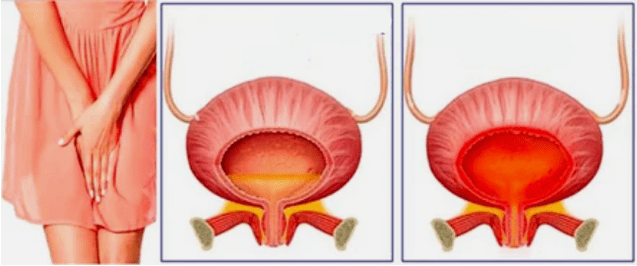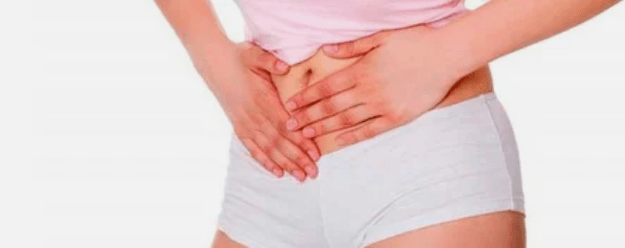Chronic cystitis is a "special" illness where every tenth woman suffers.Often encounter a new exacerbation after 1-2 weeks.After the course of the antibiotics.
What's going on and how can you overcome the disease?In order to get a clear answer to these questions, it should be understood which chronic cystitis is provoked and what happens in the bladder.
Chronic cystitis - the truth is the cause of the inflammation

Chronic cystitis is a collective concept that is only a result of a series of diseases.At the same time, the inflammatory process develops more than 2 months and affects not only the mucous membrane of the bladder (as with acute inflammation), but also deep layers.
It is useless to treat the disease exclusively with antibiotics such as acute inflammation.Allow pain - just to deceive yourself and to agree to the temporary relief.In the meantime, the disease will further develop, and sooner or later the pain will "reject" life.We offer a rational approach to understanding the disease.
Develops quickly in a chronic inflammatory process in the bladder.It can not only be bacteria, but also fungi, protozoa and viruses.Therefore, taking antibiotics is not always justified.
Important!The treatment of chronic cystitis with medication from the group of antibiotics is only advisable if the urine is demonstrated in the analysis of sensitive microorganisms.
A patient with chronic bladder infection always has a pathology that supports inflammation:
- Leukoplakie of the bladder (not true!) Or vaginal metaplasia - chronic throats provokes a benevolent degeneration of the mucous membrane, which is the result of several acute attacks of flower inflammation or sexual infection, including hidden (urinary rasmosis, chlamydie, etc.);
- Diverticles of bladder, polyps, urolithiasis - a great place for the spread of bacteria and fungi;
- Kidney inflammation, hydronephrosis, kidney disease - infection from the kidney with urine constantly gets into the bladder;
- The deep arrangement of the urethra opening, which can be seen during sexual intercourse, provokes Post Coithic Cystitis;
- Reduction of local immune protection - occurs in hormonal malfunctions (inadequate synthesis of estrogens is observed during pregnancy during the menopause during menopause with ovarian pathology), genital diseases, diabetes mellitus;
- Chronic variety of infection (tooth decay, chronic tonsillitis, sinusitis, etc.) - The pathogen spreads out with blood.
Important! These diseases are the real cause of chronic cystitis.Therefore, the disease should be taken into account together with a causal pathology.For example, the correct diagnosis sounds like this: "Bladder polypose. Chronic bacterial cystitis."
A tightening of chronic bladder infection can be provoked:
- Small amount of water drunk;
- Acceptance of spicy foods, alcohol;
- Settlement, acute respiratory infections;
- "Greenhouse" effect - dense synthetic linen, narrow jeans;
- Elementary non -compliance with personal hygiene.
Symptoms of chronic cystitis in a woman
Chronic cystitis results in less pronounced symptoms than acute inflammation.With the severity of the clinical symptoms and the relapse frequency, the following options for the course of the chronic aperture summary are differentiated:
- Stable latent - the lack of symptoms and laboratory changes in the urine is only confirmed with an endoscopic examination.
- Latent with rare relapses - an acute image of cystitis does not occur longer than 1 time per year;
- Latent with frequent relapses - deterioration 2 or several times a year;
- Slow current inflammation, which is confirmed laboratory and endoscopic;
- Interstitial - pronounced symptoms, persistent pain syndrome.
Important!Chronic cystitis from chronic pelvic pain should be differentiated.In the last pathology in most cases there are no changes in the analysis of the urine, there is no endoscopic confirmation of the inflammation.
Changes in the walls of the bladder vary from Catarrhal, to ulcerative and necrotic.
Symptomatic image of chronic bladder infection:
- Pain is an almost constant pain in the lower abdomen (above the Schubis), which grows when filling the bladder and with a periodic painful pain.Pain when urinating - before, afterwards, but more often at the end of emptying the bladder.
- Frequent urination - When checking the treatment of chronic bladder infection, women find that frequent bars cannot do without a toilet long, which end up with the release of a small amount of urine and a feeling of incomplete emptying.Often there is NICHTURIA (campaigns on the toilet at night) and a stressful urinary incontinence.
- Changes in the urine - in the ulcerative lesion and the beginning of the necrotic process, blood appears in the urine.
Important!In contrast to urethritis, the pain in chronic cystitis is not always associated with the urine.
If the symptoms of chronic bladder inflammation in women are worse after treatment (after 1-2 weeks), inflammation is triggered by activating a kind of microorganism.The relapse that was created a few weeks after the therapy shows a repeated infection with a different type of pathogen.Together with the signs of chronic bladder inflammation, women also notice the symptoms of the underlying disease - discharge from the vagina with gynecological pathology, pain in the lower back or colic pathology during kidney pathology.
Important!The analysis of urine in chronic bladder infection does not always show signs of inflammation and recognizes the pathogen.The only study guaranteed to confirm the diagnosis is cystoscopy.Sometimes urography is required.
How do you treat the chronic pallor correctly?

Most women who suffer from chronic bladder infection have tried all antibiotics and homeopathic remedies in themselves, which is the therapeutic injection in the bladder and ionophoresis.And why doesn't it seem mandatory that complex treatment does not help?The answer is simple - the cause of the inflammation is not eliminated.In the following areas there is an effective treatment for chronic bladder infection:
- Elimination of causal pathology
Depending on the diagnosis, the urethra (plastic) is carried out with an abnormal arrangement of the urethra, laser ablation of leukoplakia and polyps, etc.Almost all operations are carried out by the urethra, no scars on the skin.The patient carries out spinal anesthesia.
Trans -urethral operations (e.g. removal of stones) are often carried out during cystoscopy.Checking of women about the treatment of chronic cystitis often indicate pain in endoscopic examination.Cistoscopy should be carried out with anesthesia so that the patient has no pain.After transurethral operations, a woman is only in a hospital for one day, on the second day she can go to work.
- The fight against the infection
Depending on the type of proven pathogen, the patient is prescribed a course of antibiotics, antiviral or antifungal agents.In bacterial cystitis, medication with bactericidal (non-bacteriostatic) effects are prescribed at 7-10 days.
- Treatment of chronic bladder infections in women
Most of the time, NSAIDs are used to rapidly level pain syndrome.After 2-3 weeks.NSAIDS course, the effect remains up to 3 months. At the same time, antihistamines are prescribed.
- Immune stimulation
At the same time as antibiotic therapy, the use of immune stimulants can replace prevention courses over the next 6 months.
- Elimination of tissue -hypoxia
In order to improve the diet of the bladder mucosa and prevent the formation of adhesions, anti -agents are prescribed.
Preparations that restore microcirculation and have an immunosimizing effect are also widespread in prostatitis in men and are prescribed in women in chronic bladder infection.
- Prevention of the replacement for the epithelium
Hormonal drugs have recently been actively used for this purpose.Esstrogen and progesterone accelerate the development of the protective layer on the bladder mucosa.The widespread medication Odivin is made in tablets and candles.
- Local therapy
For local exposure to the inflammatory process, you can use installations (injections) in the bladder of dioxide, heparin, colloidal silver solution (combating bacteria, viruses, simplest and mushrooms).However, this treatment is only used for extreme cases to exclude an infection.
- Physiotherapy
Physiotherapy - drug electrophoresis, ultrasound, laser treatment, electrical stimulation, magnetotherapy - prevent a further replacement of the epithelium of the bladder and have a absorption effect.Medicine treatment is actively supplemented by physiotherapy exercises in order to normalize blood circulation and strengthen the pelvic muscles.
- Treatment with folk remedies
It is possible to treat chronic pallor at home with baths and decoctions of medicinal herbs, only with the approval of the treating doctor!Most of them have a diuretic and antiseptic effect.In addition, the stomach activates the tissue regeneration, burdock fights with a fungal infection, chamomile and Ivy eliminate muscle cramp (leverage effect), the Echinacea has an antiviral effect.Treatment with medical herbs takes at least a month, the best effect is achieved with a combination of several herbs.
Important!In chronic cystitis, it is necessary to consume enough water to exclude sharp, salted dishes, smoked meat and food with preservatives and chemical dyes from the diet.
What is the forecast?
The duration of the treatment and the forecast of the disease depends on the degree of damage to the epithelium of the bladder, the type of simultaneous pathology and the condition of immunity.To prevent relapses, doctors recommend keeping the following recommendations:
- 10 days.Drink herbal cooking;
- The next 10 days are antibiotics;
- Another 10 days.A decoction of other medical grass.
A similar scheme that is used for 3-6 months.After the main course, the aggravation of chronic cystitis practically eliminates.
The most unfavorable forecast for the formation of scars in the bladder and urethra.In such cases, there is a need for a surgical excision of connective tissue locations.
It should also be remembered that a chaotic medication without a doctor can eliminate acute symptoms, but do not restore the mucous membrane of the bladder and does not relieve the causal disease.Only a doctor who has a clear idea of the cause of the disease prescribes an effective treatment scheme individually and helps to get rid of the strenuous symptoms of chronic cystitis!


























